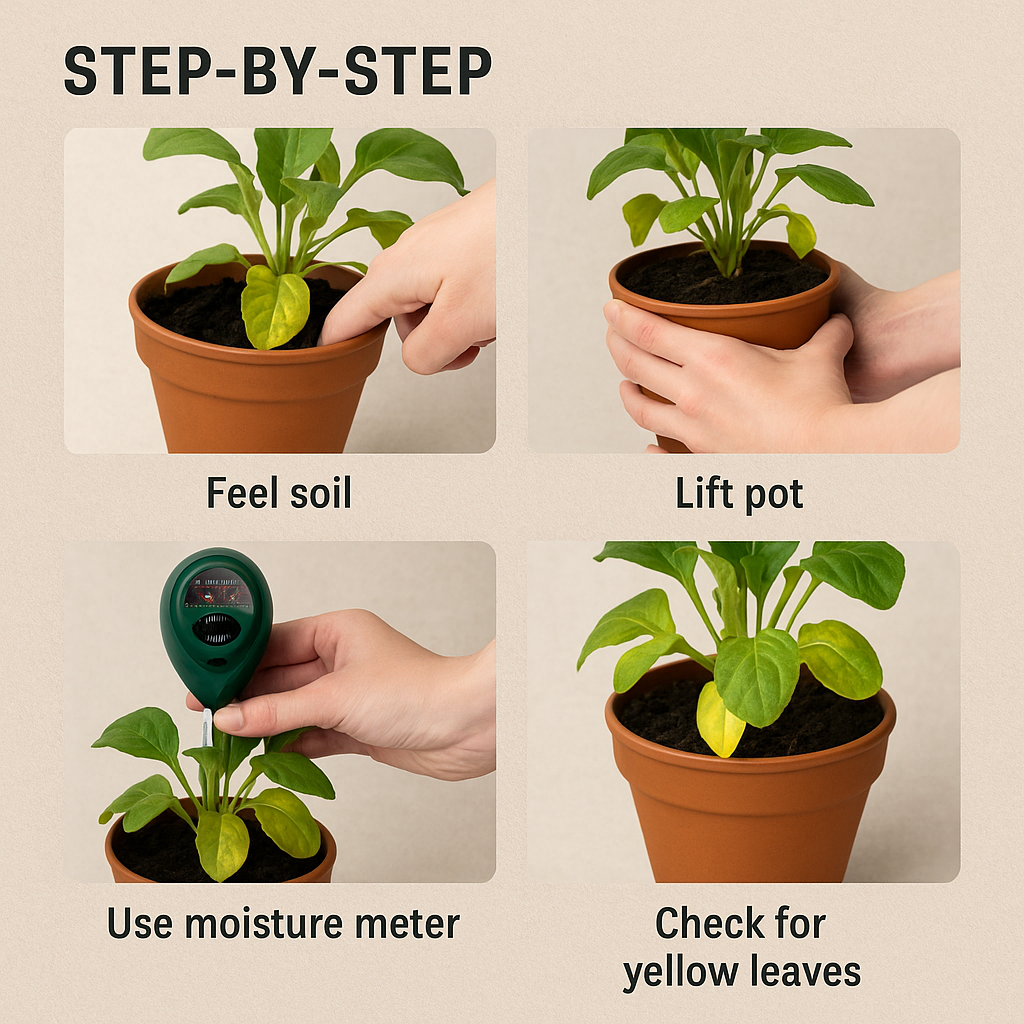Overwatering is one of the most common mistakes plant owners make, especially beginners. If your plant looks unhealthy despite your efforts, it may be receiving too much water. In this guide, you’ll learn how to know if you’re overwatering your plant, the signs to watch for, and how to fix the problem before it’s too late.
Why Overwatering Happens
Many people water their plants with good intentions, assuming more water equals better growth. However, excess water can lead to root rot, fungal infections, and eventually plant death. Understanding your plant’s watering needs is crucial to keeping it healthy.
Signs You’re Overwatering Your Plant
1. Yellowing Leaves
One of the most common signs is yellow leaves, especially on the lower parts of the plant. While yellowing can also result from nutrient deficiencies, overwatering is a frequent cause.
2. Wilting Despite Moist Soil
If your plant is wilting even though the soil is damp, this is a red flag. It often indicates root rot or oxygen deprivation caused by soggy soil.
3. Mushy or Brown Roots
Healthy roots are firm and white. If you notice soft, dark brown, or black roots when repotting, your plant is likely suffering from overwatering.
4. Fungus or Mold Growth
Visible white mold on the surface of the soil or a sour smell from the pot are signs of excess moisture. This can create an ideal environment for harmful pathogens.
5. Leaf Drop
When overwatered, some plants shed their leaves as a defense mechanism. This usually starts from the bottom up and happens gradually.
6. Stunted Growth
Even though the plant is receiving water, overwatering can suffocate roots and limit nutrient absorption, resulting in little to no new growth.

How to Check If You’re Overwatering
- Feel the soil: Stick your finger about 2 inches into the soil. If it’s consistently wet, you may be overwatering.
- Lift the pot: Wet soil is heavier. If the pot feels heavy days after watering, the soil might not be draining properly.
- Use a moisture meter: This simple tool provides accurate readings of the soil’s moisture level and helps avoid guesswork.
What to Do If You’ve Overwatered
1. Let the Soil Dry
Stop watering immediately and let the soil dry out naturally. Place the plant in a well-ventilated area with indirect sunlight.
2. Remove Damaged Leaves
Trim off yellow or dead leaves to help the plant focus its energy on new growth.
3. Improve Drainage
Check if the pot has drainage holes. If not, repot the plant into one that does. Use a well-draining potting mix and consider adding perlite or sand.
4. Repot if Necessary
If the roots are severely damaged, repot the plant in fresh soil and remove rotted roots carefully with sterilized scissors.
How to Prevent Overwatering in the Future
- Learn about your plant’s specific watering needs.
- Establish a watering schedule based on season and climate.
- Always check soil moisture before watering.
- Choose pots with adequate drainage.
- Avoid watering on a fixed calendar—respond to the plant’s condition.
To check your plant’s soil moisture with precision, you can buy a moisture meter here on Amazon.
Conclusion
Learning how to know if you’re overwatering your plant can save you time, money, and frustration. By recognizing the signs early and adjusting your watering habits, you’ll support healthier root systems and more vibrant, thriving plants.
Want more eco-friendly plant care tips? Read our guide on https://quickadvicedaily.com/plant-pots-using-recycled-aluminum-cans/

[…] If your plants aren’t thriving, it might be a watering issue—learn more in our guide on How to Know If You’re Overwatering Your Plant. […]
[…] If your recycled hanging garden looks unhealthy, learn how to spot overwatering in our guide: How to Know If You’re Overwatering Your Plant. […]